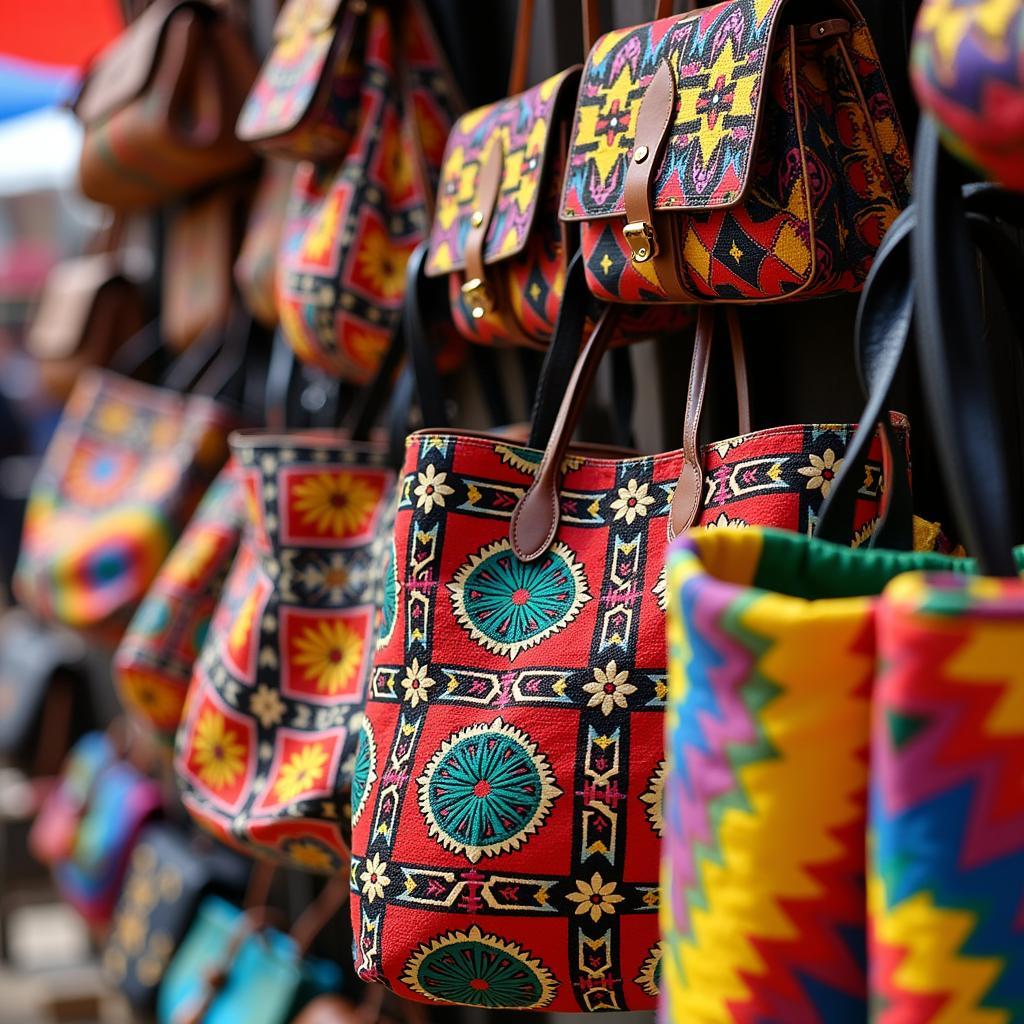African Beaded Lace: A Symphony of Beads and Culture
African Beaded Lace is a vibrant and intricate art form that embodies the rich cultural heritage of the continent. It is a testament to the creativity, skill, and craftsmanship of African artisans, who have been using beads to adorn themselves and their surroundings for centuries. This blog post will delve into the fascinating world of African beaded lace, exploring its history, significance, styles, and the artists who create this stunning art form.
A Legacy of Beads: The History of African Beaded Lace
The use of beads in Africa dates back to ancient times. Archaeological evidence suggests that beads were being crafted and worn in various parts of the continent as early as the 3rd millennium BCE. Beads served not only as decorative elements but also held symbolic meaning, representing social status, wealth, and cultural identity.
Beads were traditionally made from various materials found in nature, including shells, bone, wood, and seeds. With the introduction of trade routes, glass beads from Europe and Asia became increasingly popular in Africa, adding to the diverse palette of materials used for beadwork.
Beyond Decoration: The Significance of Beaded Lace
African beaded lace is more than just a beautiful embellishment. It is a powerful symbol of cultural identity, storytelling, and tradition. Each bead and pattern carries a unique meaning, reflecting the diverse customs, beliefs, and histories of different African communities.
Storytelling Through Beads
For centuries, beaded lace has been used to tell stories and preserve history. Patterns and colors often represent historical events, ancestral lineages, or significant figures. The intricate designs woven into the lace can be read as visual narratives, passed down through generations and serving as a living archive of cultural knowledge.
Celebrating Life Events
African beaded lace plays a crucial role in various life events, from weddings and births to funerals and initiation ceremonies. It is often incorporated into clothing, jewelry, and decorative items, adding elegance and significance to these special occasions.
Styles of African Beaded Lace
The styles of African beaded lace are as diverse as the continent itself. Each region and ethnic group has its unique traditions and techniques, resulting in a mesmerizing array of patterns, colors, and textures.
From West to East: A Spectrum of Style
- Nigerian Beaded Lace: Known for its bold colors, geometric patterns, and intricate details, Nigerian beaded lace is often used in elaborate gowns and traditional attire.
- Ghanaian Beaded Lace: Characterized by its delicate beadwork, intricate designs, and use of vibrant hues, Ghanaian beaded lace is often incorporated into head wraps, jewelry, and decorative items.
- Kenyan Beaded Lace: Kenyan beadwork is renowned for its use of natural materials, traditional motifs, and vibrant colors. Maasai beaded jewelry and clothing are particularly iconic, featuring intricate geometric patterns and symbolic colors.
The Artists Behind the Beads
The creation of African beaded lace is a testament to the talent and artistry of African artisans. These skilled individuals, often working within family traditions, meticulously handcraft each piece, imbuing it with their cultural heritage and artistic vision.
More Than Craftspeople: Guardians of Tradition
“Beadwork is not just a craft for me,” says Aisha, a renowned bead artist from Tanzania. “It’s a way to connect with my ancestors, share our stories, and preserve our heritage. Each bead I use holds a meaning, a memory, a piece of our past.”
African Beaded Lace: A Timeless Legacy
African beaded lace is a testament to the enduring beauty and cultural richness of the continent. It is a vibrant art form that continues to evolve, blending traditional techniques with contemporary designs. By supporting African artisans and appreciating their work, we can help ensure that the legacy of beaded lace continues to inspire generations to come.

